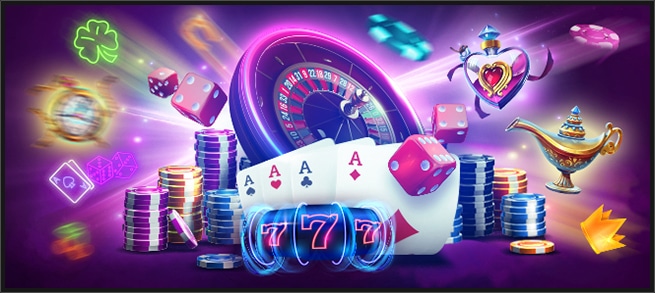
Within the lively and thrilling world of casinos, wherein luck and tactics intertwine, color and aesthetic play a critical role in attracting gamblers. From the moment players step into a casino or log into a gaming platform, they are enveloped in a visual feast that captures their attention and lures them to discover further. Vivid colors, engaging graphics, and creative layouts are meticulously crafted to create an environment of thrill and expectation, ultimately improving the gaming experience.
As players move through the dynamic landscape of casino games, they encounter a range of designs that not only serve aesthetic purposes but also influence feelings and decision-making. Hues like scarlet and gold symbolize riches and luck, while calm blues and greens can create a much tranquil environment. Grasping how these elements work together enables casinos to create an inviting and energizing atmosphere that encourages players to interact with the games, invest additional time at the tables, and boost their general enjoyment.
The Science of Hue in Gambling Games
Color plays a crucial role in the development of casino games, shaping player emotions and behaviors. Bright and vibrant hues, such as red and amber, are often used to ignite excitement and capture focus. These shades create a feeling immediacy and vitality, encouraging participants to engage more readily with the activity. By strategically selecting hues, creators aim to evoke feelings of pleasure and expectation, which can enhance the total gaming experience.
Different colors also have psychological connotations that can influence how gamblers perceive their possibilities of success. For case, emerald is often associated with luck and wealth, making it a frequent choice in activities like the roulette wheel and poker games. This connection can lead gamblers to feel more optimistic and assured in their gameplay, ultimately encouraging them to stake more. Understanding these associations allows game developers to design environments that enhance player enjoyment and retention.
Furthermore, the design of gaming interfaces often utilizes blended colors and contrasting hues to instruct players’ actions. For case, successful combinations may be emphasized with striking, opposing hues, creating a visual incentive. This approach supports favorable outcomes and supports repeated gameplay. By exploiting the psychology of color, gaming venues can design activities that not only captivate participants but also maintain them involved and dedicated in their play experience.
Design Elements that Engage Gamers
The aesthetic appeal of casino games is primarily influenced by the implementation of vibrant colors. Lively and contrasting colors are deliberately chosen to create an appealing atmosphere that captures attention. For example, crimson and golds often signify luck and prosperity, which is why they are prevalent in the palettes of slot machines and table surfaces. These colors not only draw players in, but they also stir emotions associated with thrill and anticipation, enhancing the overall gaming experience.
In addition to color, the design and organization of gambling games play a crucial role in player attraction. Games are designed to be user-friendly, ensuring that players can quickly understand the guidelines and gameplay. Accessible interfaces, along with captivating graphics and animations, help maintain gamer interest and promote extended play sessions. The tactile elements, such as the texture of the controls and the audio of the games, also contribute to a comprehensive sensory experience that keeps players immersed.
Finally, conceptual elements in game design can significantly influence player choice. Many casino games are inspired by popular culture, fairy tales, or exploration motifs, incorporating symbols and characters that connect with players. These themes create a sense of engagement and connection, making each game feel unique. When players feel a connection to the theme, they are more likely to choose that game over others, leading to increased participation and enthusiasm within the casino environment.
Case Studies: Successful Casino Slot Designs
One noteworthy example of impressive gambling game design is the acclaimed slot machine series based around hit movies. Games such as those based on the The Wizard of Oz and Game of Thrones utilize bright colors and superior graphics to immerse players in well-known narratives. The employment of lively visuals and captivating sound effects grabs the interest of players, building an affective connection to the theme. This tactic merely promotes longer play but also improves the overall gaming experience, yielding increased player retention.
Another notable case is the application of the psychology of color in table games like 21 and roulette. sites not on GamStop Casinos often create these games with deep reds and greens, colors traditionally connected with luck and wealth. For instance, the emerald felt on a blackjack table provides a calming effect, while the red accents in roulette invite excitement. This intentional use of color helps to create an inviting atmosphere that stimulates players to engage, addressing their psychological impulses and increasing their enjoyment.
Finally, social casino games that incorporate community features and vivid, dynamic designs have seen remarkable success in engaging players. Games like Zynga’s Poker and Slot-O-Mania leverage striking colors and playful animations to create an inviting online environment. The addition of leaderboards, social sharing options, and in-game rewards encourages competition and community, pulling players in for longer sessions. Such designs not just make the games visually attractive but also highlight social interaction, a vital factor in player retention and engagement within digital casino environments.